Let’s Explore Museo ng Republika ng 1899 (Barasoain Museum)
After taking a short break and while everyone is busy exploring the Barasoain church, i grabbed the opportunity to visit the adjacent museum. The old convent of Barasoain Church was converted into a museum. Interestingly, the concept of converting convents into historical or ecclesiastical museums is not really new. The same thing happened to the adjacent convents of San Agustin Church in Intramuros (Check: Museo de San Agustin), Santa Cruz Parish (Diocesan Shrine of San Agustin) in Tanza, Cavite where the historic Oath Taking of Emilio Aguinaldo took place (Check: Santa Cruz Convent Museum), and even the adjacent convent museum of Taal Basilica in Batangas (Check: Casa Martin).

The church of Barasoain played a huge role in Philippine history and earned the title as the “Cradle of Democracy in the East”. Numerous important events took place in the church and its convent. The church became the venue for the inauguration of the First Philippine Congress on September 15, 1898, the drafting of Malolos Constitution and the inauguration of the first Philippine Republic in 1899. The latter was the main focus of the museum, hence it was named by the NHCP as the Museo ng Republika ng 1899 (Museum of the Republic of 1899).
It is interesting to note that it is the first ever modernized museum by NHCP with the theme “Independence and Constitutional Republic.” We already came across some of the NHCP history museums in Cavite including the Aguinaldo Mansion (Check: Museo ni Emilio Aguinaldo) and the Baldomero Aguinaldo Museum (Check: Museo ni Baldomero Aguinaldo). Because of the church’s rich history, the museum is not purely ecclesiastical but you can still spot some religious items being displayed.
Museo ng Republika ng 1899 is a modernized museum and similar to what we have seen from the Aguinaldo Mansion, the place is filled with a great number of infographic walls. Currently, the museum has five galleries for visitors to explore.
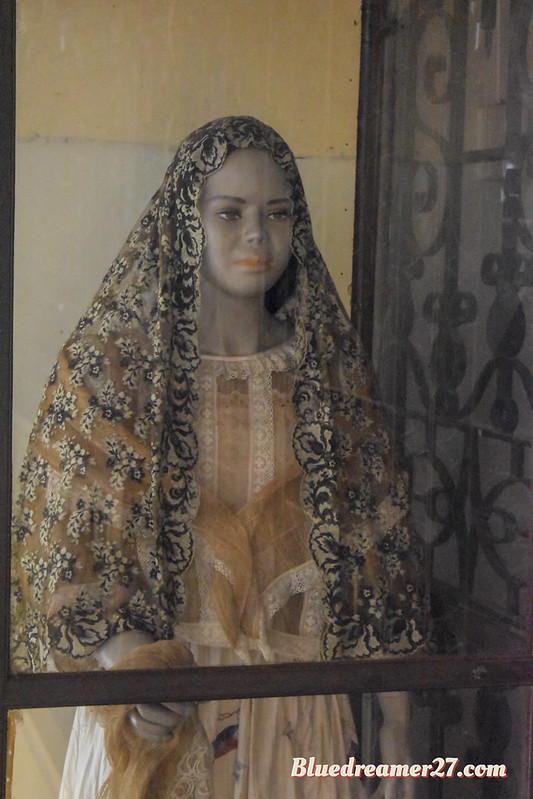
As you go upstairs to start your tour, you will be welcomed by this statue of a Filipina lady. It was quite an entrance if you asked me haha. The museum is notably dark so exploring this alone will be quite an eerie experience.

Along with the statue is a collection of religious items.
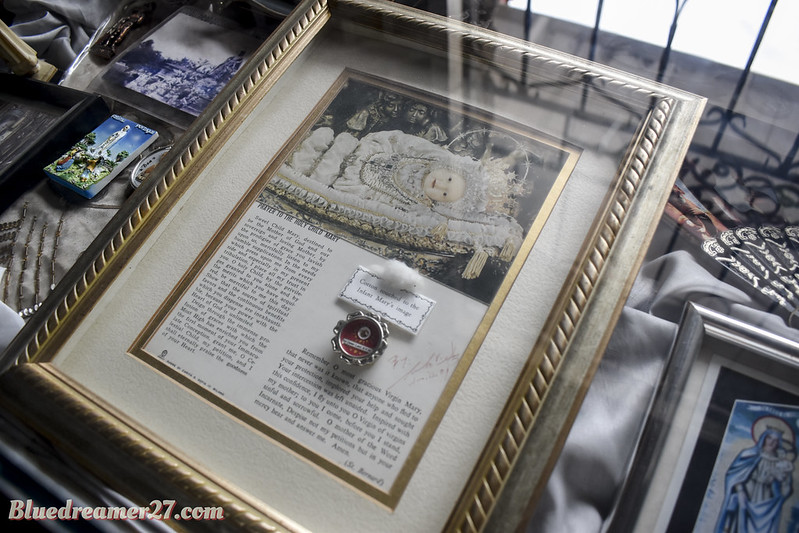
Including some images and relics.
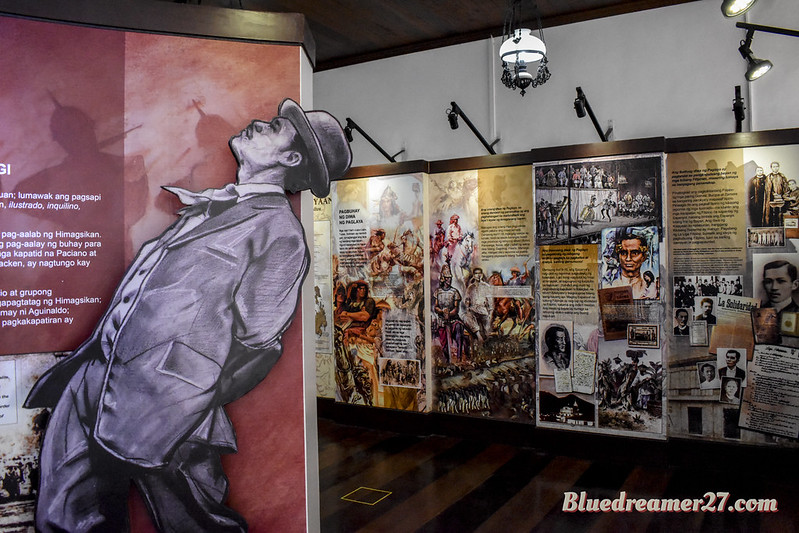
The first gallery is called “Sigaw ng Kalayaan” that features the numerous uprisings launched by Filipinos against their Spanish colonizers. The infographic walls will share us the story of oppressed Filipinos and our heroes during the Spanish colonization era that took over 300 years
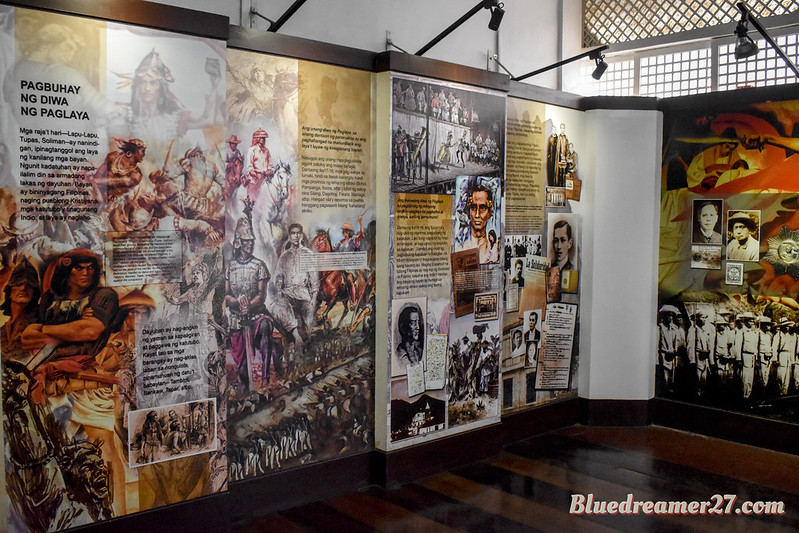
These include the history of Lapu-Lapu, the battle of Mactan up to the Rizal’s historic death.

The second gallery is entitled “Watawat ng Kalayaan” that narrates the events that occurred during the Pact of Biak-na-Bato until the declaration of Philippine independence
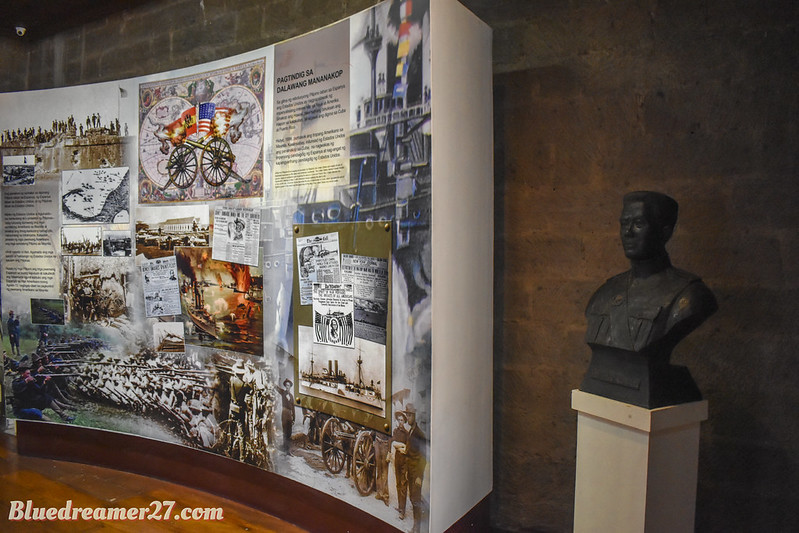
This side of the wall features the Spanish-American War in 1898 and beside it is a bust statue of the former president Emilio Aguinaldo
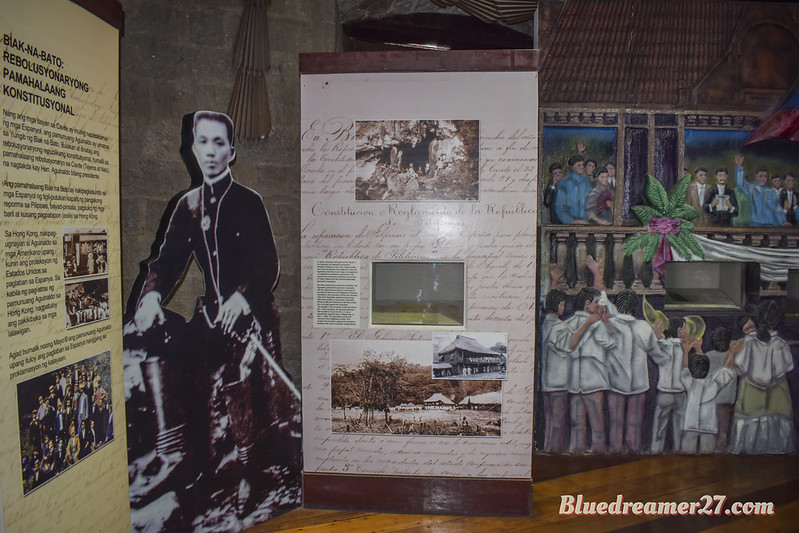
The 1897 Biac-na-Bato Constitution

One of the highlights of this gallery is the low relief diorama that features the declaration of Philippines independence that took place in Kawit, Cavite in 1898
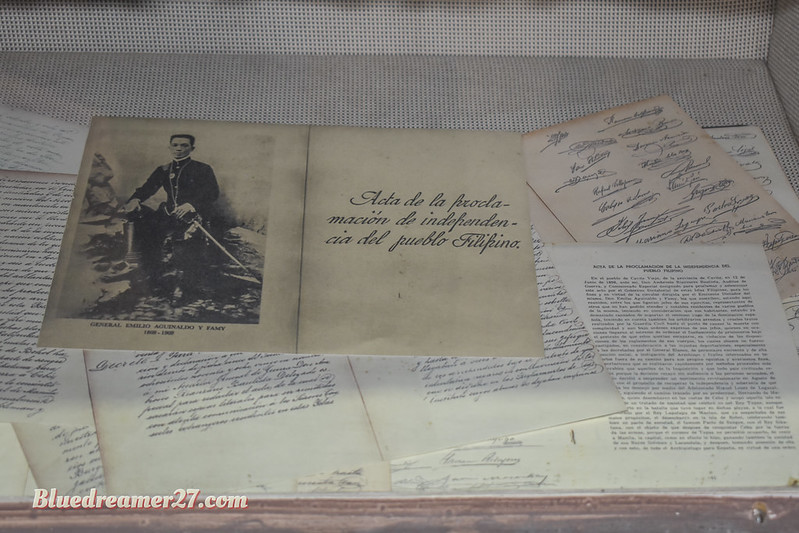
The diorama is enclosing two sets of important items related to the historic declaration. First is the Acta de la proclamación de independencia del pueblo Filipino that features Signatories from the 98 delegates. If you visit the Aguinaldo Shrine in Kawit, the Garden in front of the mansion features murals in black marble walls containing the entire Declaration written in Spanish. (Check: Aguinaldo Park)
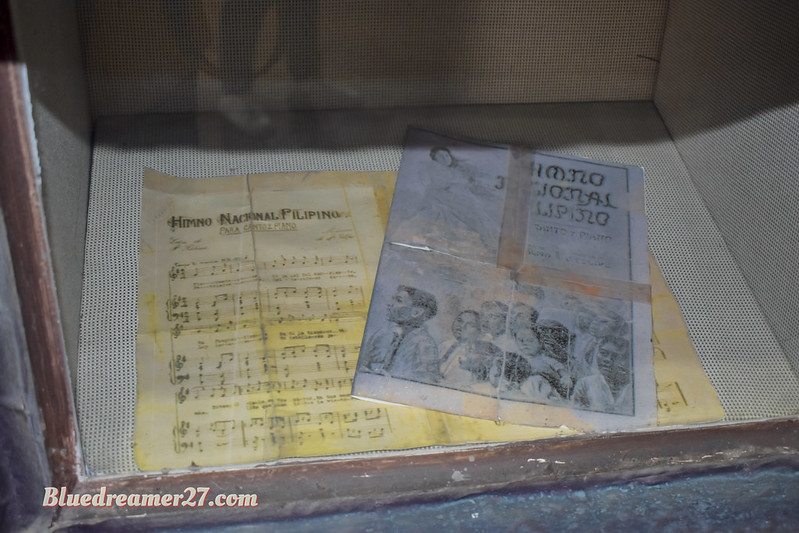
It also features a copy of Himno Nacional Pilipino as composed by Julian Felipe. Felipe was commissioned by Aguinaldo to work on a march for the revolutionists. This copy is simply a march and it cannot be sung yet until Jose Palma‘s poem “Filipinas” perfectly matched the tune. Palma’s original Spanish lyrics underwent several English and Tagalog translations.
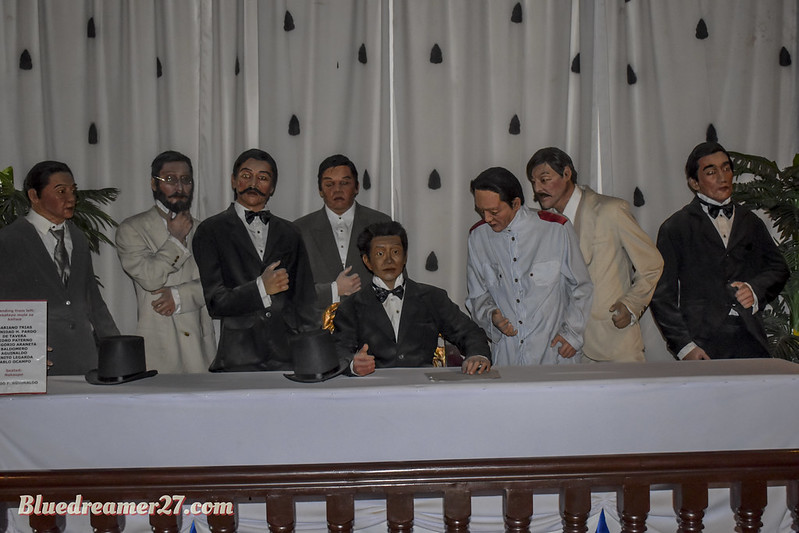
The third gallery is entitled “Pagtindig ng Republika” that centers on the establishment of the Malolos Congress and the drafting of the Constitution. It also highlights a light and sound presentation
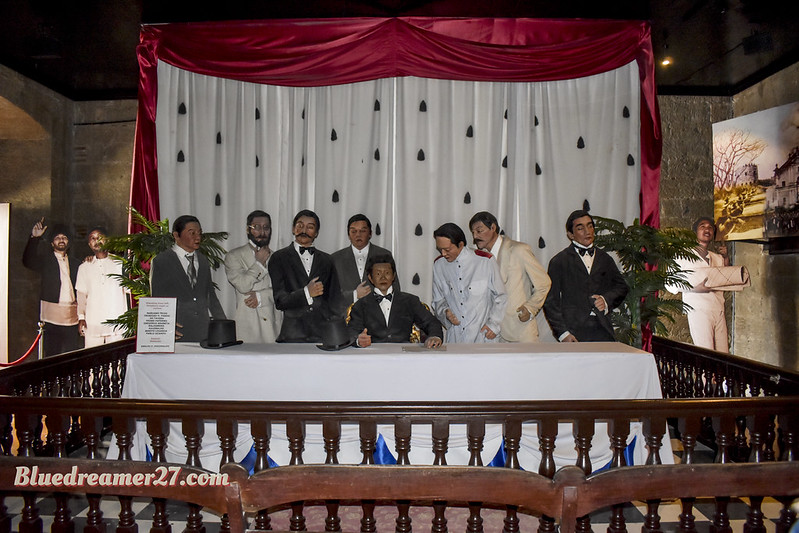
At the heart of this gallery is a life-size diorama of the aforementioned event of history. These features all the notable personalities that are involved in the establishment of the Malolos Congress. From left to right standing behind Emilio Aguinaldo (seated); Mariano Trias, Trinidad Pardo de Tavera, Pedro Paterno, Gregorio Araneta, Baldomero Aguinaldo, Benito Legarda, and Pablo Campo.

The fourth Gallery is called “Saligang Batas at Pinunong Kinatawan” which highlights the Malolos Constitution and its proponents. It features a glass display showcasing the names of the proponents of the Malolos Constitution. It also includes bust statues including Felipe Calderon who drafted the constitution together with Pedro Paterno and Cayetano Arellano. Calderon is named as the Father of Malolos Constitution.

You can also find this statue of La Republica Filipina. You can spot the same sculpture in the Aguinaldo Shrine
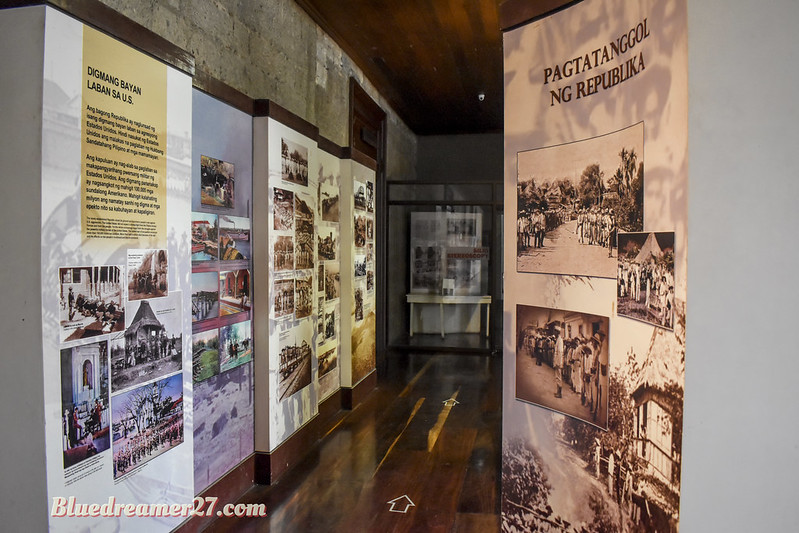
The fifth Gallery is entitled “Pagtatanggol sa Republika” that features the threat posed by the American colonizers to the new republic.

This also features an area showing the heritage of the Constitutional republic. It highlights various copies or drafts of the constitution including the proposed constitution by Apolinario Mabini, the Malolos Constitution of 1899, 1935 Constitution, and more.

More infographic walls in the fifth gallery
 More infos about the Philippine American war.
More infos about the Philippine American war.

The Silid Stereography. This features stereographic cards of the Philippine-American War. Stereographs were introduced by the Americans and they are made with two almost identical photographs, side by side, to be viewed with a stereoscope. When viewed through a stereoscope, the photograph appeared three-dimensional, an awe-inspiring illusion for anyone during that time.
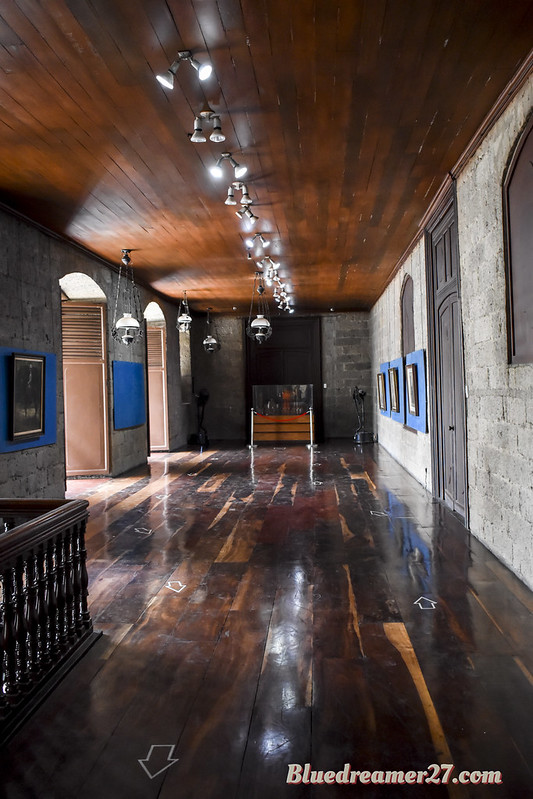
While the infographic walls and the light and sound presentation provides a modern approach to the Museo ng Republika ng 1899, the building itself is well preserved that allows you to feel that you are really exploring back in time.

Old Spanish Ceiling lamps

Overlooking the courtyard

The old staircase that takes you to the exit.

As you head outside, you’ll find this carriage. This is the original carriage used by President Emilio Aguinaldo during the opening of the Malolos Congress
Things you should know before visiting the Museo ng Republika ng 1899
► There is no Entrance fee to the museum
► Health protocols are strictly observed inside (social distancing and wearing of facemask is required)
► Open from Tuesdays to Sundays with Operating Hours from 8am to 4pm
This post is part of my Bulacan Pilgrimage series. Feel free to visit my previous entries
- A Pilgrimage to Bulacan
- Saint Joseph the Worker Parish in San Jose Del Monte, Bulacan
- San Isidro Labrador Parish in Muzon, San Jose Del Monte Bulacan
- Nuestro Señor Jesucristo Parish / Diocesan Shrine of Saint Andrew Kim Taegon
- Saint Andrew Kim Taegon Shrine Museum
- Barasoain Church / Our Lady of Mount Carmel Parish in Malolos
- Museo ng Republika ng 1899
- Minor Basilica and Cathedral of Immaculate Conception/ Malolos Cathedral
- Santiago Apostol Church in Plaridel, Bulacan
- Saint Augustine Parish/ Birhen sa Patio in Baliuag, Bulacan
- Santo Niño de Bustos Parish in Bustos, Bulacan
After Barasoain Church, we headed next to the nearby parish, the Malolos Cathedral which i will discuss more in my next entry.
If you have time, don’t forget to follow me on my social media pages
Facebook Page : It’s Me Bluedreamer
Instagram: @bluedreamer1227
YouTube Channel: Milton Coyne




Pingback: Nuestro Señor Jesucristo Parish / Diocesan Shrine of Saint Andrew Kim Taegon in Lolomboy, Bocaue, Bulacan - It's Me Bluedreamer!
Pingback: San Isidro Labrador Parish in Muzon, San Jose Del Monte, Bulacan - It's Me Bluedreamer!
Pingback: Saint Joseph The Worker Parish of San Jose Del Monte, Bulacan - It's Me Bluedreamer!
Pingback: A Pilgrimage in Bulacan - It's Me Bluedreamer!
Pingback: Saint Andrew Kim Taegon Shrine Museum in Lolomboy, Bocaue, Bulacan - It's Me Bluedreamer!
Pingback: MALOLOS BULACAN ITINERARY: 13 Exciting Things To Do
Pingback: The Historic Barasoain Church of Malolos / Our Lady of Mount Carmel Parish - It's Me Bluedreamer!
Pingback: A Detailed Tour of National Museum of Fine Arts: Important Artworks and Galleries You Should Not Miss - It's Me Bluedreamer!
Pingback: The Minor Basilica and Cathedral of the Immaculate Conception of Malolos / Malolos Cathedral - It's Me Bluedreamer!
Pingback: Museo ng Republika 1899 – Site Title